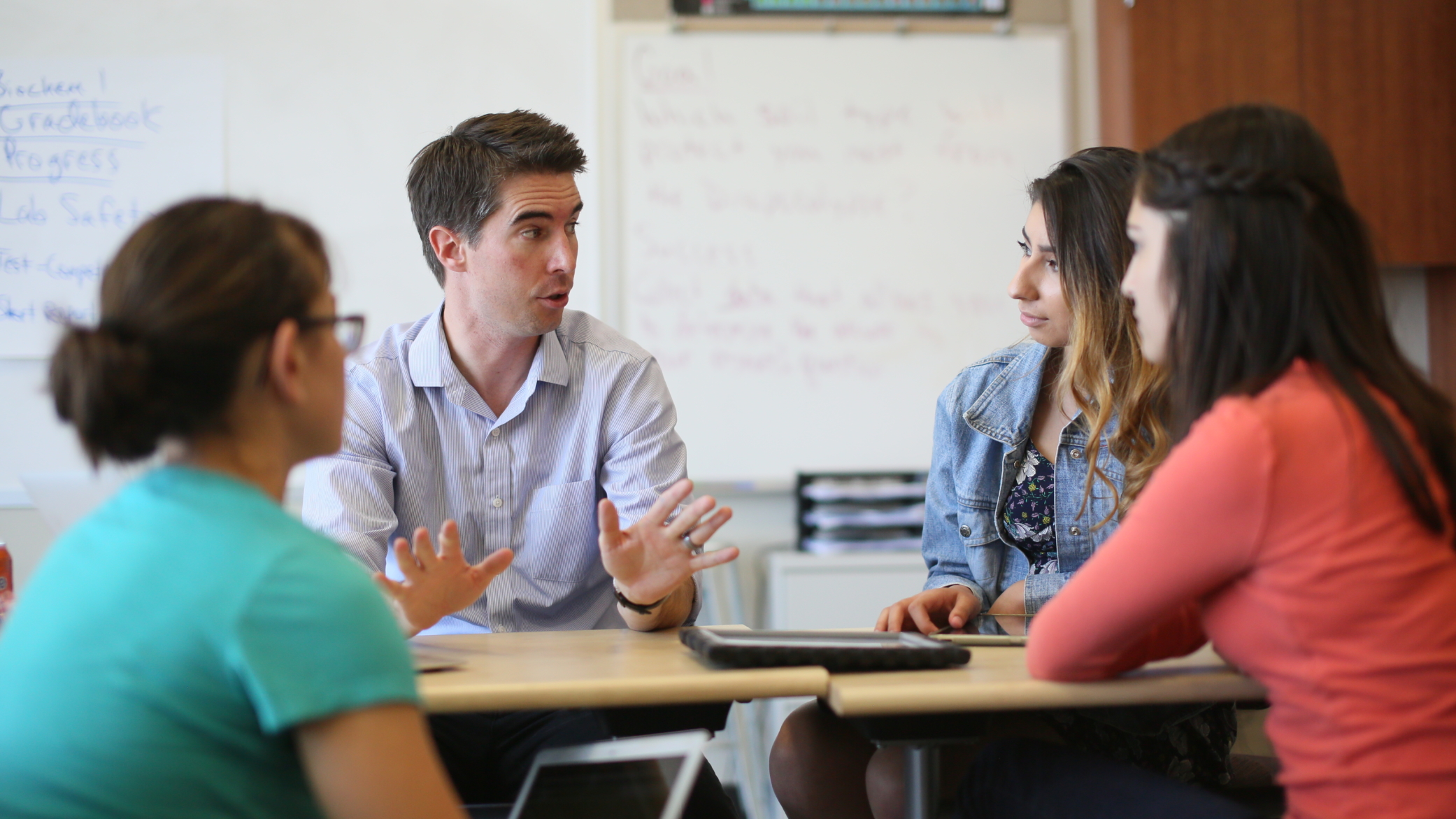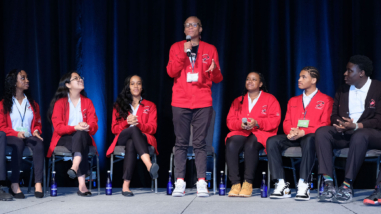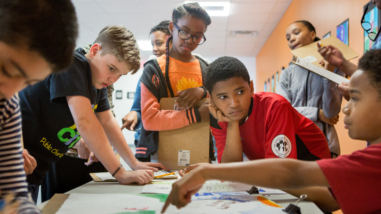New assessments help teachers innovate in classrooms

“We’re trying to target how is a kid learning to think. Are they developing deep thinking and problem-solving skills? We look at the development they’re making in terms of tackling a problem. It’s very difficult to assess, but it’s probably more important to know than whether you remember at age 30 how to divide two fractions,” said Katie Mancino, a fourth grade teacher at Two Rivers Public Charter School, a network of two elementary schools and a middle school in Washington, D.C.
Two Rivers has created “homegrown deeper learning assessments” — performance-based tasks that can be done in an hour or less, once a semester, which will help teachers monitor student progress.
“We’ve done pilots and are pretty confident the questions we have for the assessment are sound ones. We’ve done whole-school professional development around the rubrics so teachers know what language to share with the kids,” said chief of staff Khizer Husain.
Eighth grade English teacher Mo Thomas said these tasks help teachers determine their students’ expert thinking and allow teachers to shift instruction if need be.
Two Rivers serves approximately 700 students preschool through eighth grade, with about 45 percent of those students considered economically disadvantaged. The learning approach emphasizes expert thinking and complex communication. Educators have already spent more than two years developing the first two of five assessment areas.
Preparing students for real life
The varied assessment approaches offer a menu for scaling that could truly benefit teachers and students. And by focusing on deeper learning’s goal of preparing students for real life, these schools offer original perspectives that stress critical thinking, an academic mindset and self-directed learning alongside traditional academic goals. Surveys of employers and Fortune 500 companies show the skills most valued for 21st century employees are teamwork, problem solving and oral communication — all elements of deeper learning.
Students apply to Del Lago with just a name and address and are selected by lottery to attend this trailblazing campus. Two Rivers is an EL Education school, where 10- to 12-week projects in science and social studies called “learning expeditions” require students to solve problems with higher-order thinking. Henry County Schools, a 50-campus public school district in metro Atlanta, Ga., follow a personalized learning model, tailoring education to meet the needs of its 42,531 students.
Henry County district is working to use feedback as an essential element for improving assessment of its student population, which is over 50 percent African American. The aim is district-wide implementation, but the pilot is scheduled for six schools and is now underway at three. By illustrating the power of classroom relationships — whether it’s peer-to-peer, teacher-student or administrator-teacher – feedback is the focus.
“The premise is to look at feedback loops with students to increase student ownership over how they learn, where and why they learn and with whom they learn,” said Melissa Thomas, who oversees the grant at Henry County. “We want to get to a place where students have that voice in what they need.”
Fourth grade math and science teacher Tiffany Early, who’s in her fourth year at Bethlehem Elementary School in Henry County, said the assessment training has taught her to be “more purposeful and deliberate” about contact with students. She’s making “an extra effort to learn about what a student likes and what their interests are, and make sure I can send several positive notes home.”
“We’ve always set goals, but they’ve been more long-term and more academically based. Because of this program, they’re more life skills or personality — How do I interact with my environment, the people in it and what’s my contribution?” she said.
This fresh take is just the beginning, as these pioneers in education make what they hope will be the first steps toward substantive change in the way students are evaluated. These new formative assessment models can work in concert with more ingrained summative approaches to prepare students for the future.
“Ultimately, we need students to be able to walk into a job or into college knowing how to advocate for themselves. ‘I know I know this and here’s how I know this,’ said Thomas, of Henry County.
The benefits extend to teachers as well, said Husain, of Two Rivers. “You’re teaching to the right test,” he said. “If you make the right test, you should teach to it.”
Editor’s note: Sharon Jayson spent a decade at USA Today covering national trends, including education and research. Now based in Austin, Texas, she is a freelance journalist.



